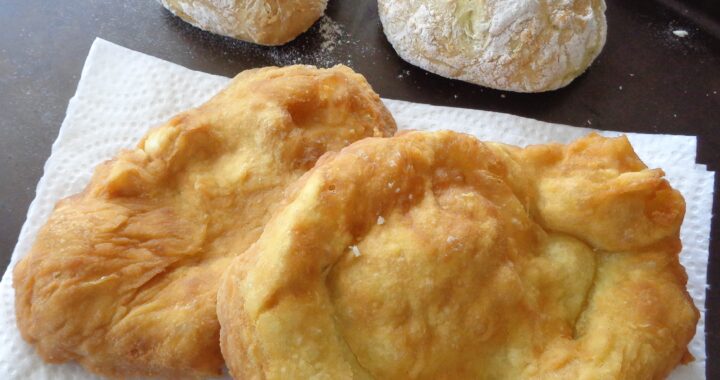Bannock is a word related to many baked/fried products with hundreds of recipes from all around the world. They are much like shortbread, in that every family has their own version and nothing tastes as good as what was enjoyed growing up.
In North America, bannock is generally thought of as a First Nations food. It is true that the Scottish brought their version of bannock to this continent, however there was already a version here made with dried plant parts that had been ground into flour. As settling increased, native bands were pushed off their land, there was a forced shift to wheat flour.
Stepping further back in history, bannock was an essential part of everyday life in the highlands of Scotland with special festival bannock for occasions like Imbolc, Beltaine, Lammas and Samhain. Scottish weather is not ideal for wheat so oats, barley and rye where first flour choices.
The intention when making bannock for the quarter day festivals was to attract health and prosperity but that is just the tip of the iceberg. There are many more traditions, stories and legends to explain the various traditions associated with Scottish bannock. However, I am going to do my best to make this a short post. If I get too far off track, there would be a need for several cups of tea (or coffee) while reading the entire missive.
1 1/2 cups flour (a mix of 1 cup wheat and 1/2 cup ground oats will work when getting closer to traditional blends)
1 tsp. baking soda
1/2 tsp. salt
1 1/2 tsp. sugar
1/2 tsp. yeast (quick rise)
3/4 cup warm water
oil for frying (more below)
Invite the compassionate spirits to join you. Festival bannock making included a blessing of the bread to help ensure the prosperity and well-being of the entire household and keep you safe from the fairies. Hold your intention as the ingredients are gathered and the batter is mixed. This is a fairly wet batter so a Kitchen Wand might be a first choice for moving the dough around but if you are willing to get your hands into the dough, then bless the bread as you work to bring the ingredients together.
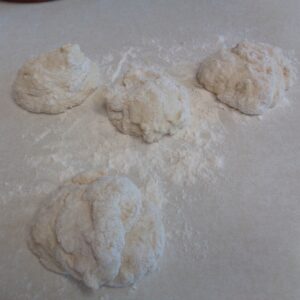 Mix all the dry ingredients together is a bowl. Add in the warm water and stir to combine. Do not work the dough any more than is needed to bring all ingredients together. It will be the consistency of overnight no knead bread batter.
Mix all the dry ingredients together is a bowl. Add in the warm water and stir to combine. Do not work the dough any more than is needed to bring all ingredients together. It will be the consistency of overnight no knead bread batter.
Turn the dough out onto a floured board and allow it to sit for 15 minutes.
My apologies for the picture, white on white on white, never works well. This recipe is enough for 4 bannock and can be easily increased.
My intention here is only to give a starting point for a very traditional turning of the wheel food. One that was traditionally baked rather than fried.
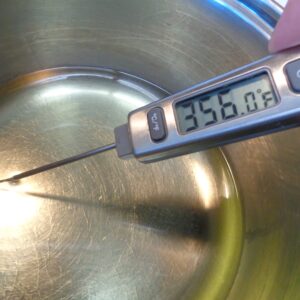 Traditional Scottish bannock was baked on stone near the hearth and this recipe can be cooked either way.
Traditional Scottish bannock was baked on stone near the hearth and this recipe can be cooked either way.
If the preference is Fry Bread, heat oil to 350 degrees F. Take one portion of the dough and pat it into a six inch circle.
Place the patty gently into the hot oil and fry for 1 – 2 minutes on either side. Transfer the bread to several layers of paper towel and allow the paper to absorb the excess oil. Keep an eye on the temperature. To hot and the inside will not be cooked and too low allows the dough to absorb extra fat.
As this is a small batch, I used a pot that was just large enough to fry one piece at a time. That way less oil is used. Too large a pan and there will be much more oil than needed.
While frying the bubbles in the dough will grow giving the bread its distinctive shape.
 Sharon Bond of Kekuli Cafe in Kelowna, B.C. says, “lot’s of love for your bannock or you are not going to have very good bannock when you fry it“.
Sharon Bond of Kekuli Cafe in Kelowna, B.C. says, “lot’s of love for your bannock or you are not going to have very good bannock when you fry it“.
Bannock can be served sweet or savoury. Topped with honey, butter and jam, or turned into tacos, this is a light and fluffy, modern version of bannock as yeast and other leavening agents would not have been easily available.
Not all bannock is fried in North America. The Cree in Alberta, Canada, for example, opt for baking their bannock. It can be left on a stone around the fire or wrapped around a willow branch and placed off to the side of the fire, or baked in the kitchen oven.
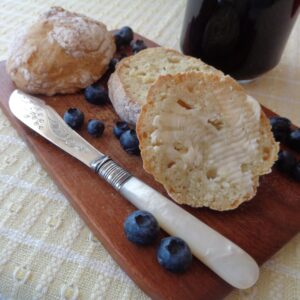 When baking, heat the oven to 450 degrees F. to simulate the fire and bake for about 20 minutes or until lightly brown. Turn the bannock over, so that the bottoms remain crisp but when connecting to those Scottish traditions, ensure that bannock is always right way up when served.
When baking, heat the oven to 450 degrees F. to simulate the fire and bake for about 20 minutes or until lightly brown. Turn the bannock over, so that the bottoms remain crisp but when connecting to those Scottish traditions, ensure that bannock is always right way up when served.
A perfectly appropriate combination of traditions for Lammas/Lughnasadh is baked bannock (sourced in Scottish roots) and blueberry jam (from Irish bilberry traditions).
Bannock is a simple inexpensive addition to Lammas celebrations. They can be made to any appropriate size from appetizer to main meal and can be topped with so many different flavour options.
Remember that bannock was originally an unleavened bread and much heavier than what we know as bannock today. Lunastal bannock might have been covered in a thin layer of eggs, butter and milk before baking as it was the only quarter day when fresh eggs would have been readily available.
The recipe above is a good place to start a bannock adventure but know there are hundreds of recipes around to explore. Find one that appeals to you and enjoy the turning of the wheel.
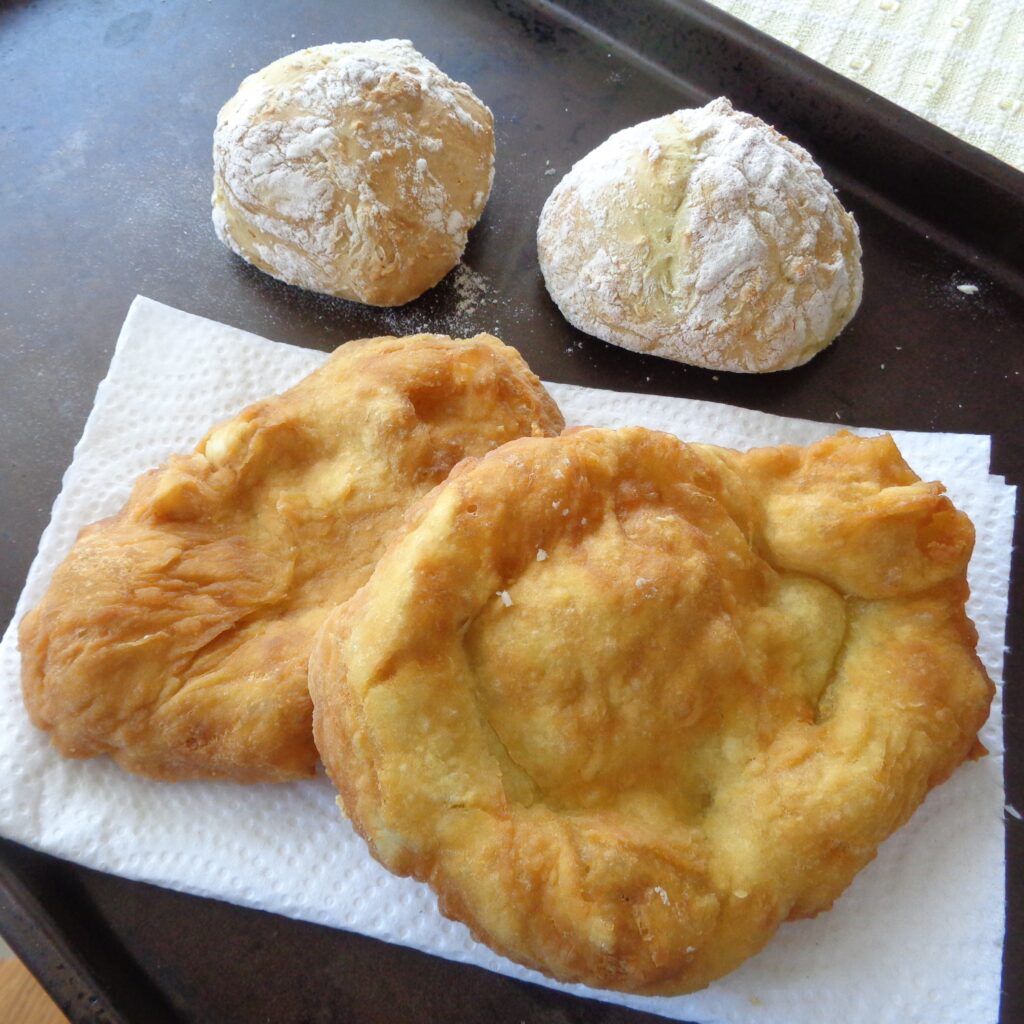 Lunastal Bannock from My Kitchen Wand
Lunastal Bannock from My Kitchen Wand

